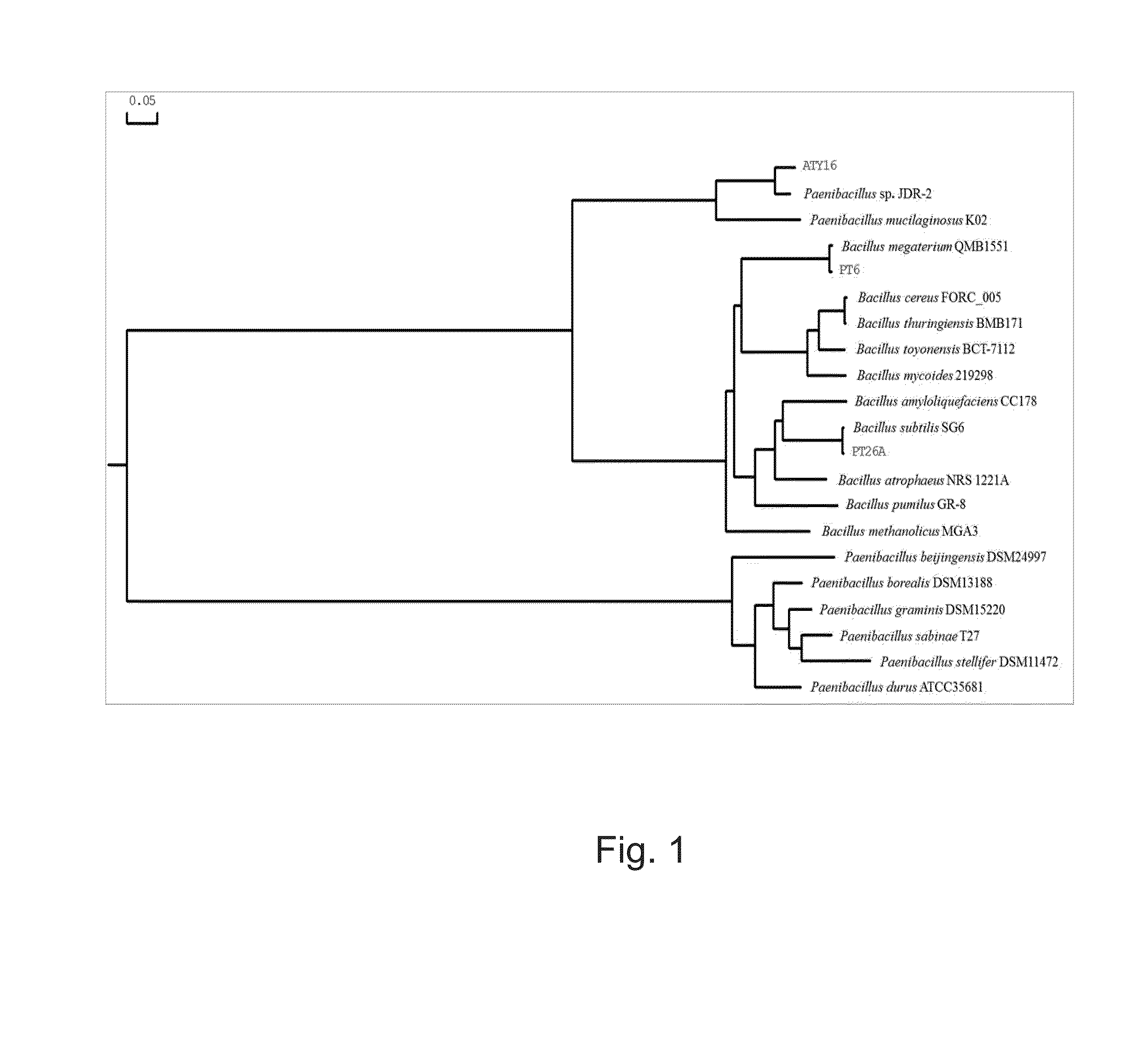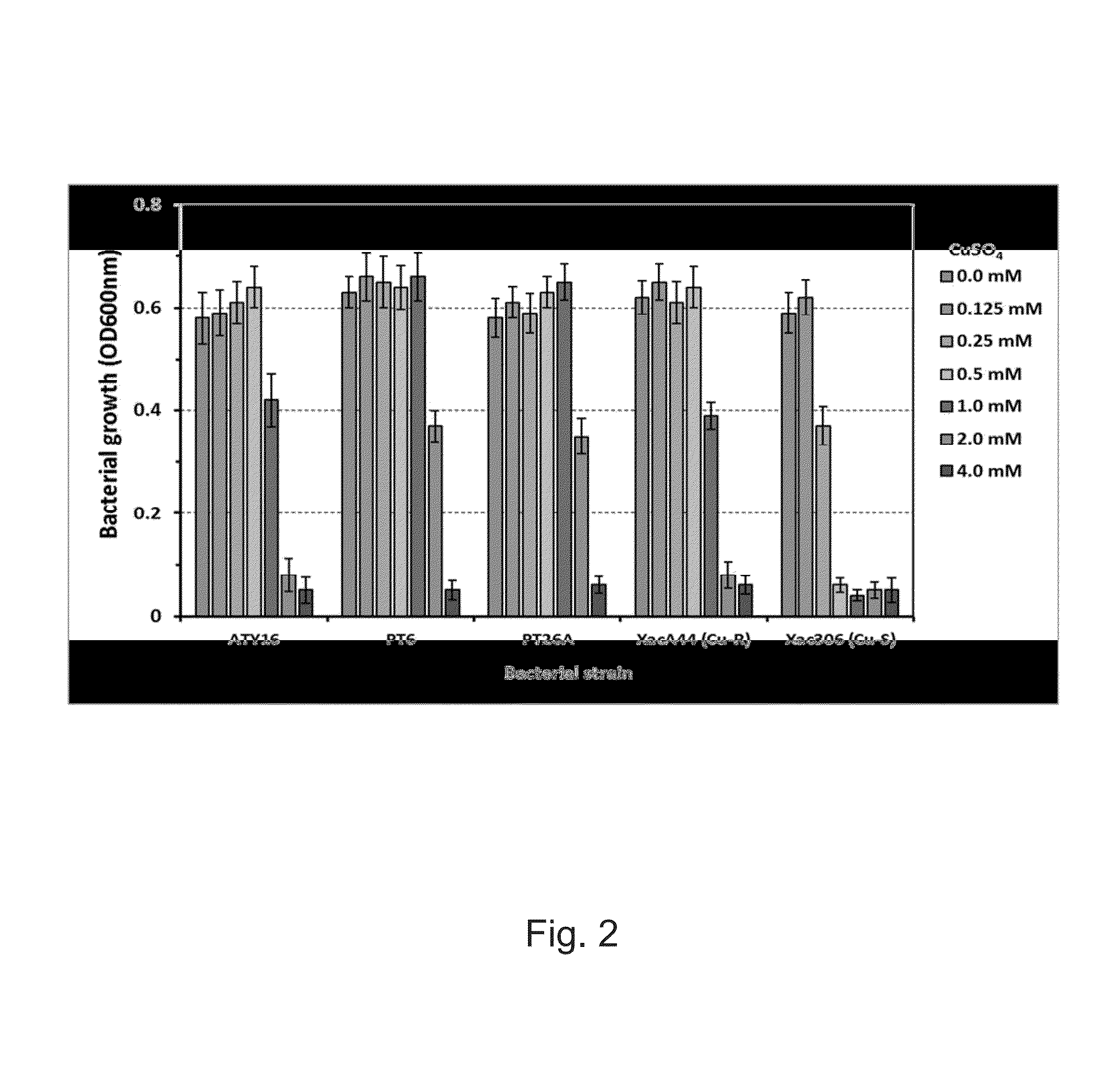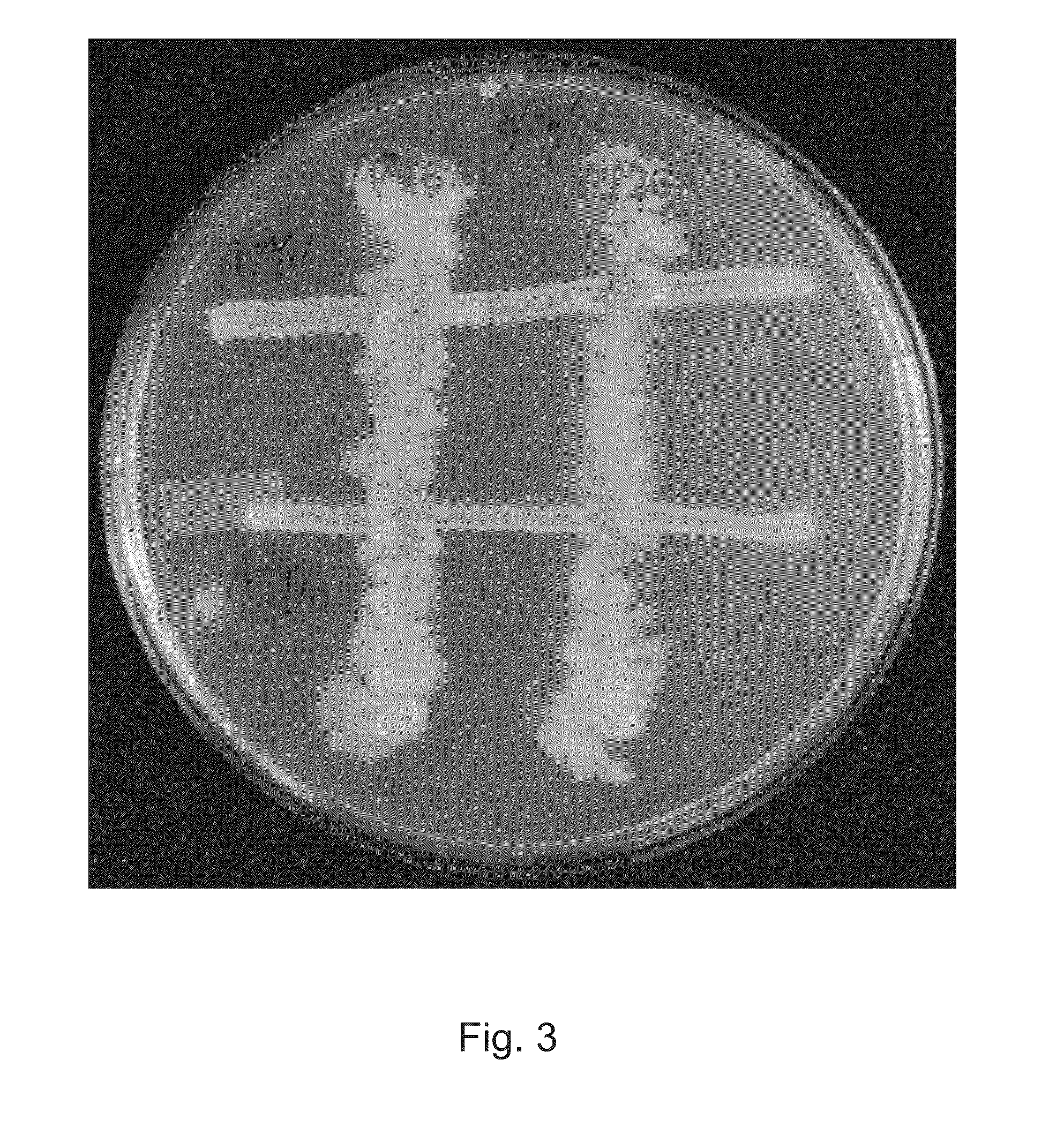Bacteria and method for improving plant health and growth
a technology of bacteria and plants, applied in the field of bacteria and bacterial combinations, can solve the problems of increasing public concerns regarding their negative impact on the environment, affecting the health and vigor of crop plants, and crops in different ecosystems around the world may suffer less than ideal conditions, so as to improve the health and disease resistance of plants, increase seed germination, and improve the effect of vigor
- Summary
- Abstract
- Description
- Claims
- Application Information
AI Technical Summary
Benefits of technology
Problems solved by technology
Method used
Image
Examples
example 1
A. Isolation and Identification of Bacteria
[0143]Endophytic bacterial strains were isolated from healthy citrus rhizosphere of asymptomatic Valencia orange (Citrus sinensis) trees in a heavily Huanglongbing (BEM diseased grove of citrus in Fort Pierce, Fla., and were isolated and morphologically characterized as described by Trivedi et al., 2011. The bacteria were isolated using nutrient agar (NA) (BD, Sparks, Md., USA) or tryptone yeast (TY) extract agar medium (Sigma, St. Louis, Mo., USA). The bacterial isolates were also evaluated in vitro for plant growth promoting activity and biocontrol ability, using the methods described by Trivedi et al., 2011. Then the bacterial isolates were subjected to molecular identification using 16S rDNA analysis. DNA extraction, 16S rRNA gene amplification, and sequencing was performed as previously described (Trivedi et al. 2011). Homology was determined using the Blastn programme within the NCBI database (http: / / www.ncbi.nlm.n...
example 2
Compatibility of Bacteria with UV Protectant and SAR Inducers
[0166]Bacteria were subjected to the following conditions. The compatibility of bacterial strains with ultraviolet (UV) protectant was determined by growing the tested bacterium in LB broth medium with different concentrations of a water soluble sodium salt of lignin (Sigma, St. Louis, Mo., USA), or without lignin, under short-wave UV radiation (254 nm in a biological safety cabinet) at a distance of 60 cm for 1 hour. The bacterial population was measured by counting the number of colonies using spread plate techniques on NA plates after incubating at 28° C. for 24 hours. The change in bacterial cell number in LB with or without UV protectant supplementation was determined The compatibility of bacterial strains with SAR inducers was determined by growing the tested bacterium in LB broth medium with or without different concentrations of salicylic acid (SA), acibenzolar-S-methyl (ASM), and 2,6-dichloroisonicotinic acid (INA...
example 3
Bacterial Tolerance to Stresses
[0169]A series of experiments were conducted to test bacterial tolerance of ATY16, PT6, and PT26A to heat shock, saline stress, and heavy metal (copper) stress. The assays were performed as described previously in the art, with modifications. Bacterial cultures at mid-exponential stage in LB were used to test survival under the aforementioned stresses. In each stress treatment, cell viability was determined by plate-counting of CFU. The survival rate was defined as the percentage of viable cell counts from the culture with stress treatment compared with those from the non-treated culture. The stress treatments were applied as follows: for heat-shock stress, the culture was transferred to 50° C. for 15 mM (30° C. used as control); for sodium stress, NaCl was added to the bacterial culture at a final concentration of 5.0% (w / v) and incubated at 28° C. for 30 mM; and then survival was estimated respectively. Copper stress assays were conducted by growing ...
PUM
 Login to View More
Login to View More Abstract
Description
Claims
Application Information
 Login to View More
Login to View More - R&D
- Intellectual Property
- Life Sciences
- Materials
- Tech Scout
- Unparalleled Data Quality
- Higher Quality Content
- 60% Fewer Hallucinations
Browse by: Latest US Patents, China's latest patents, Technical Efficacy Thesaurus, Application Domain, Technology Topic, Popular Technical Reports.
© 2025 PatSnap. All rights reserved.Legal|Privacy policy|Modern Slavery Act Transparency Statement|Sitemap|About US| Contact US: help@patsnap.com



